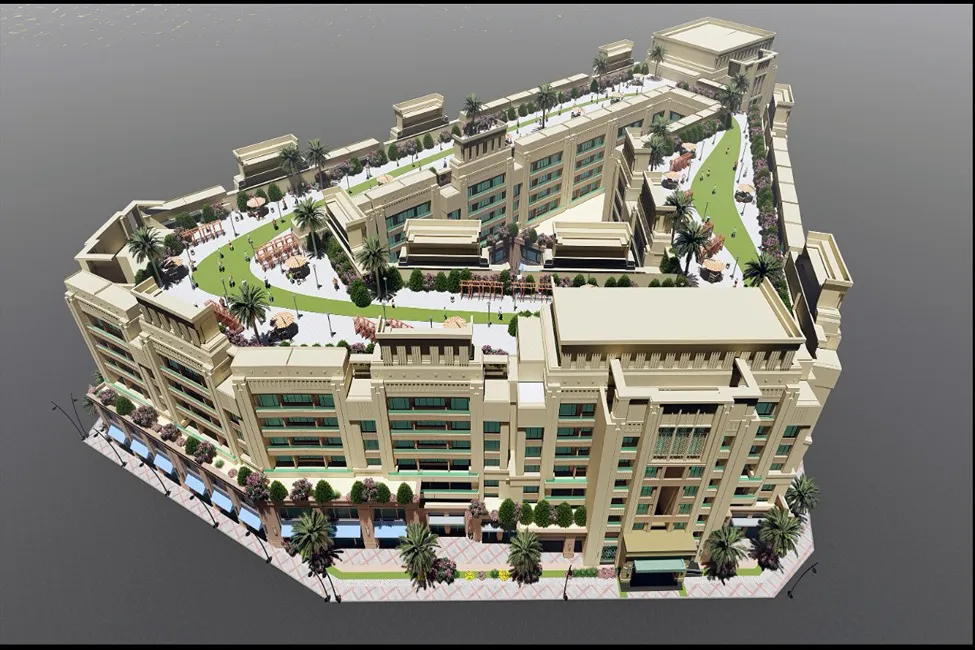An Overview of Hurghada’s Vibrant Neighborhoods
Hurghada’s coastline has long been a magnet for sun-seekers and investors alike, but its neighborhoods tell different stories. Where Downtown (Sakkala) thrives on unpolished local energy—spice-scented alleyways, family-run cafés, and the hum of daily Egyptian life—Mamsha al Seyoufi represents its polished counterpart. This stretch of curated luxury, with its manicured promenades and high-end resorts, caters to those who prefer convenience at their doorstep. As 2025 approaches, the divide between these two worlds grows starker, making the choice between authenticity and comfort more pronounced than ever.
The Allure of Mamsha: A Modern Coastal Experience
Mamsha doesn’t just offer a place to stay—it sells a rhythm. Imagine mornings that begin with sea views from a high-rise balcony, afternoons spent lounging at a beach club where staff remember your name, and evenings strolling a traffic-free promenade lined with sushi bars and gelato shops. This is a district designed for predictability: the sidewalks are wide and spotless, the security cameras discreet but ever-present, and the amenities—pharmacies, supermarkets, yacht docks—are all within a 10-minute walk.
Yet Mamsha’s polish comes with trade-offs. The very conveniences that attract foreign buyers (fixed-price menus, English-speaking concierges) can feel sterile to those craving cultural immersion. A coffee here costs triple the price of a Downtown ahwa, and the "local crowd" consists largely of expats and holidaymakers. For some, that’s the appeal: a seamless, resort-style existence where Hurghada’s grittier realities fade into the distance.
Cost of Living Comparison: Mamsha vs. Downtown Hurghada
Let's cut to the chase—Mamsha and Downtown offer completely different versions of life in Hurghada, and your budget will feel it.
Mamsha: The Easy (But Pricey) Life
Picture this: You're sipping an iced latte on a pristine promenade, no honking, no hassle. That latte costs you—big time. Everything here comes with a resort tax. The grocery stores stock familiar international brands (at import prices), your building has a pool and gym (included in your rent), and you'll never worry about power cuts. But that convenience? It keeps your expenses high.
Downtown: The Real Deal
Now imagine this: You grab fresh falafel for pennies from a street cart, haggle for produce at the local market, and rent an apartment where the AC might be questionable but the location can't be beat. Your money stretches further, but you trade comfort for character. The streets buzz at all hours, the marina's just a short walk, and you'll quickly learn which cafés have the strongest (and cheapest) Egyptian coffee.
Accessibility and Transportation: Navigating Between the Two Areas
Getting around Hurghada isn’t just about distance—it’s about how you move. Mamsha and Downtown sit barely 15 minutes apart, but the journey between them reveals the city’s split personality.
Mamsha: Walkable but Isolated
Mamsha’s manicured promenade lets you stroll from café to beach club without stepping onto a road. Need groceries? A pharmacy? A sushi bar? It’s all within a 10-minute walk. But venture beyond this bubble, and options thin out. Taxis here charge tourist premiums (expect 30–50 EGP for a Downtown trip), and microbuses—packed with locals paying 2–5 EGP—rarely stop near the resort gates. The new tram line promises better connectivity by 2025, but for now, Mamsha’s convenience comes with invisible walls .
Downtown thrives on movement. Microbuses rattle down Sheraton Road for 1–3 EGP, and shared taxis (called orange cabs) zip between districts for 5–10 EGP. No schedules, no stops—just shout your destination and hop in. But efficiency has trade-offs: drivers ignore meters, routes change without notice, and rush hour turns streets into parking lots. For reliability, apps like Uber or Careem work—but at triple the local fare
Future Developments: What to Expect by 2025 in Both Areas
Hurghada’s skyline is shifting fast—and where you choose to plant roots in 2025 could hinge on these upcoming changes.
Mamsha: Polished Expansion
The golden promenade isn’t done growing. Developers are stacking new luxury towers along the shoreline, with projects like Princess Resort and AlHambra First Avenue adding high-end apartments and rooftop pools to the mix . The bigger play? A push for year-round tourism—think winter wellness retreats and co-working spaces targeting digital nomads . But this gloss comes at a cost: rising HOA fees and tighter restrictions on short-term rentals to keep the area "exclusive."
Downtown: The Comeback
While Mamsha dazzles, Downtown’s gritty charm is getting a strategic facelift. The long-delayed tram line finally hits Sheraton Road in 2025, slicing commute times to the marina and airport . Older buildings near the souq are being snapped up for conversions—Lebanese investors are turning crumbling guesthouses into boutique hostels, and the first co-living spaces for budget divers are opening near the port. The wildcard? A proposed pedestrian zone linking the marina to El Dahar, which could spike foot traffic—and street food prices.
_lg.webp)


